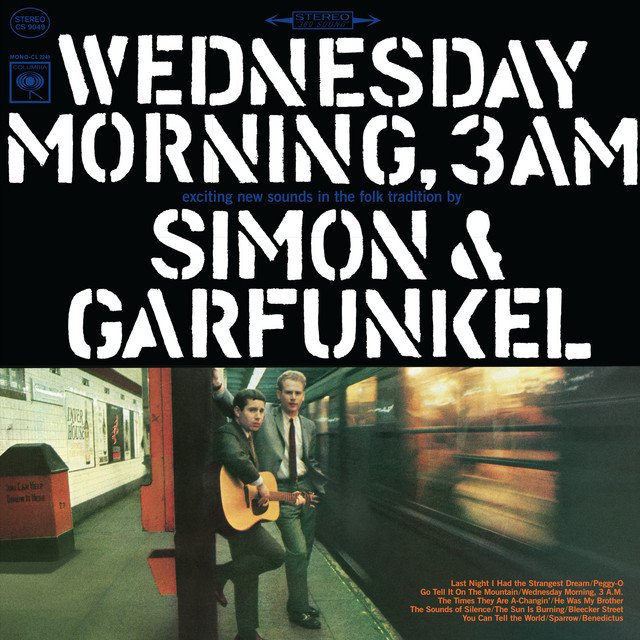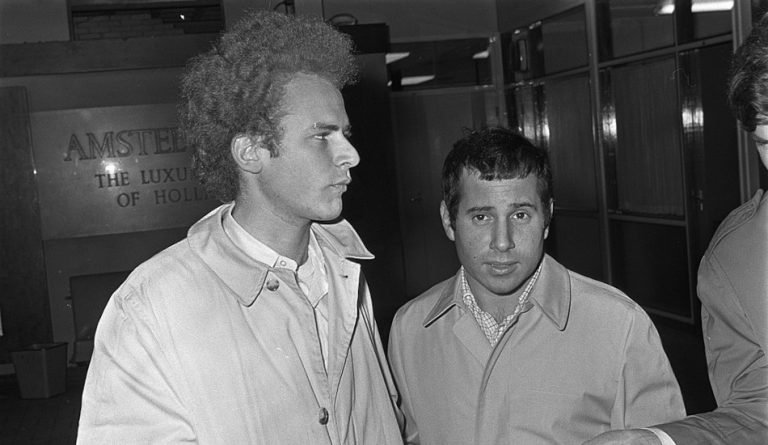There’s something rather strange about how Simon and Garfunkel’s The Sound of Silence manages to feel ancient and newly urgent at the same time.
Released in 1964 as a stripped-back folk track that barely made a dent, the song was quietly reborn the following year as an electrified version that became a number-one hit by January 1966.
That remix, laced with reverb and cautious electric guitar, turned a fading whisper into a warning loud enough to wake the charts.
Paul Simon began writing the song alone in his bathroom, lights off, tapping into that strange creative quiet that only tiled walls and running water seem to understand. He was 21.
What came out of that dark was a vision of disconnection dressed in poetic simplicity.
The opening line, “Hello darkness, my old friend,” has long since outgrown the song, now a meme, a punchline, a shared generational sigh.
But within the track’s full arc, it’s less self-pity than surrender. It is an acceptance that silence has become the only thing that listens.
Simon would later say he didn’t set out to write about alienation in America, though listeners heard it anyway. And they still do.
From the lines “people talking without speaking, people hearing without listening” to the eerie prophetic weight of “the words of the prophets are written on the subway walls,” the lyrics tap into a paranoia that’s hard to ignore.
Communication is broken, yes, but more than that, people are nonchalant about it. The song feels less like an elegy and more like a diagnosis.
Originally featured on the acoustic album Wednesday Morning, 3 A.M., the song went nowhere, and the duo split.

Garfunkel went back to university; Simon left for England. Columbia Records, rattled by the album’s failure, began looking for ways to reposition their investment.
It wasn’t until producer Tom Wilson took a risk, layering drums and electric guitar over the existing track without telling the duo, that the song found its second life.
Wilson’s version, more in line with the rising folk-rock trend, was released in September 1965.
Simon heard it on the radio while in Europe. By early 1966, it had climbed to the top of the Billboard charts. Simon was confused rather than elated.
The final version starts with Simon’s acoustic guitar played live with his vocal. Guitars by Al Gorgoni and Vinnie Bell soon creep in, with Bob Bushnell on bass and Bobby Gregg on drums.
The mix leans heavily on echo, giving it that foggy texture often likened to the Byrds’ early sound.
The vocals had to be slowed down to sync with the newly recorded instrumentation. Simon was initially horrified.
But the rework didn’t just find an audience. It secured their future.
The re-release helped propel the duo back into the studio, leading to the full-length Sounds of Silence album.
The original title, “The Sounds of Silence,” was plural, suggesting multiple forms of silence. That ambiguity remains part of the song’s power.
Garfunkel described the lyrics as “biblical,” which tracks when you read the prophetic cadence.
The song feels like it’s warning of a fall that’s already happened.
There’s the solitary walk “in restless dreams” on “narrow streets of cobblestone,” the chilling image of the neon light “that split the night and touched the sound of silence,” and that iconic lament: “fools,” said I, “you do not know / silence like a cancer grows.”
Rather than scream, the song implores. Simon’s narrator reaches out with open arms: “hear my words that I might teach you, take my arms that I might reach you,” but his plea falls like “silent raindrops.”
The pain isn’t in being ignored. It’s in knowing the silence will keep growing.
The sound of silence, then, is more than a metaphor. It’s the quiet between people, the absence of connection, the invisible wall that technology, consumerism, and social performance continue to reinforce.
In the song’s closing image, people bow not to God but to the “neon god they made,” a phrase that’s aged too well.
Beneath those fluorescent signs are the true words, “written on the subway walls and tenement halls.”
The wisdom of prophets goes unnoticed, half-heard, or worse, ignored.
In later years, Simon suggested the “neon god” referred to television, an all-powerful medium overtaking public attention.
It could just as easily be smartphones now. The prophetic line about “people talking without speaking” continues to echo through every comment thread, every conversation skipped for a scroll.
Simon’s relationship with the song has never been uncomplicated.
He didn’t anticipate its interpretation as a generational anthem or a vessel for grief. Yet that’s exactly what happened.
The track has often resurfaced in national moments of mourning, from JFK retrospectives to 9/11 tributes.
Garfunkel saw it as spiritual. To Simon, it was something more conflicted. That tension lives in the performance.
That duality, the prophetic and the personal, is likely why the song endures. Simon didn’t just tap into a mood.
He gave language to the dislocation people didn’t know how to voice.
The fact that The Graduate used it over Benjamin Braddock’s blank stares only locked it deeper into pop culture’s subconscious.
The film didn’t simply borrow the song. It helped turn its ambiguity into something visually iconic.
There’s a cultural residue here too. The 1960s were not a silent decade.
Vietnam, civil rights, counterculture, revolution; noise was everywhere.
Yet what Simon and Garfunkel caught was something quieter and possibly scarier: the creeping normalisation of indifference.
The folk-rock format gave it access to radio, but it’s the poetry that gave it longevity.
Decades later, the song has enjoyed new waves of relevance, from film soundtracks to YouTube covers to meme culture.
One Reddit user noted how students today sing the line “hello darkness, my old friend” as a joke.
They might not know the verses, but they carry the echo.
Another listener shared how it became their anchor during pandemic lockdowns, proof that even in isolation, the song’s silence speaks loudly.
And what keeps it alive might be that the song doesn’t wrap itself up neatly.
It begins with a conversation with darkness and ends with a warning written in the margins of everyday life.
Just the unshakable feeling that something vital is being missed, and the only thing louder than the silence is the fact no one’s trying to break it.
So maybe the question is this: if we still hear the sound of silence, who are we pretending not to listen to now?
In someway, it seems The Sound of Silence is not just a song, but a hymn to resistance against the shallow and disconnected nature of our society.
You might also like:
- Top 10 60s Hits That Shaped Folk Music
- Queen Songs That Shaped Rock: A Journey Through Their Greatest Hits and Hidden Gems
- Sing-Along Classics: 50 Songs Everyone Knows by Heart
- The Ultimate Guide to the Best Karaoke Songs and Album Tracks of All Time
Simon & Garfunkel Sound of Silence Lyrics
Hello darkness, my old friend
I’ve come to talk with you again
Because a vision softly creeping
Left its seeds while I was sleeping
And the vision that was planted in my brain
Still remains
Within the sound of silence
In restless dreams I walked alone
Narrow streets of cobblestone
‘Neath the halo of a street lamp
I turned my collar to the cold and damp
When my eyes were stabbed by the flash of a neon light
That split the night
And touched the sound of silence
And in the naked light I saw
Ten thousand people, maybe more
People talking without speaking
People hearing without listening
People writing songs that voices never share
No one dared
Disturb the sound of silence
“Fools” said I, “You do not know
Silence like a cancer grows
Hear my words that I might teach you
Take my arms that I might reach you”
But my words like silent raindrops fell
And echoed in the wells of silence
And the people bowed and prayed
To the neon god they made
And the sign flashed out its warning
In the words that it was forming
And the sign said, “The words of the prophets
Are written on the subway walls
And tenement halls
And whispered in the sounds of silence”



